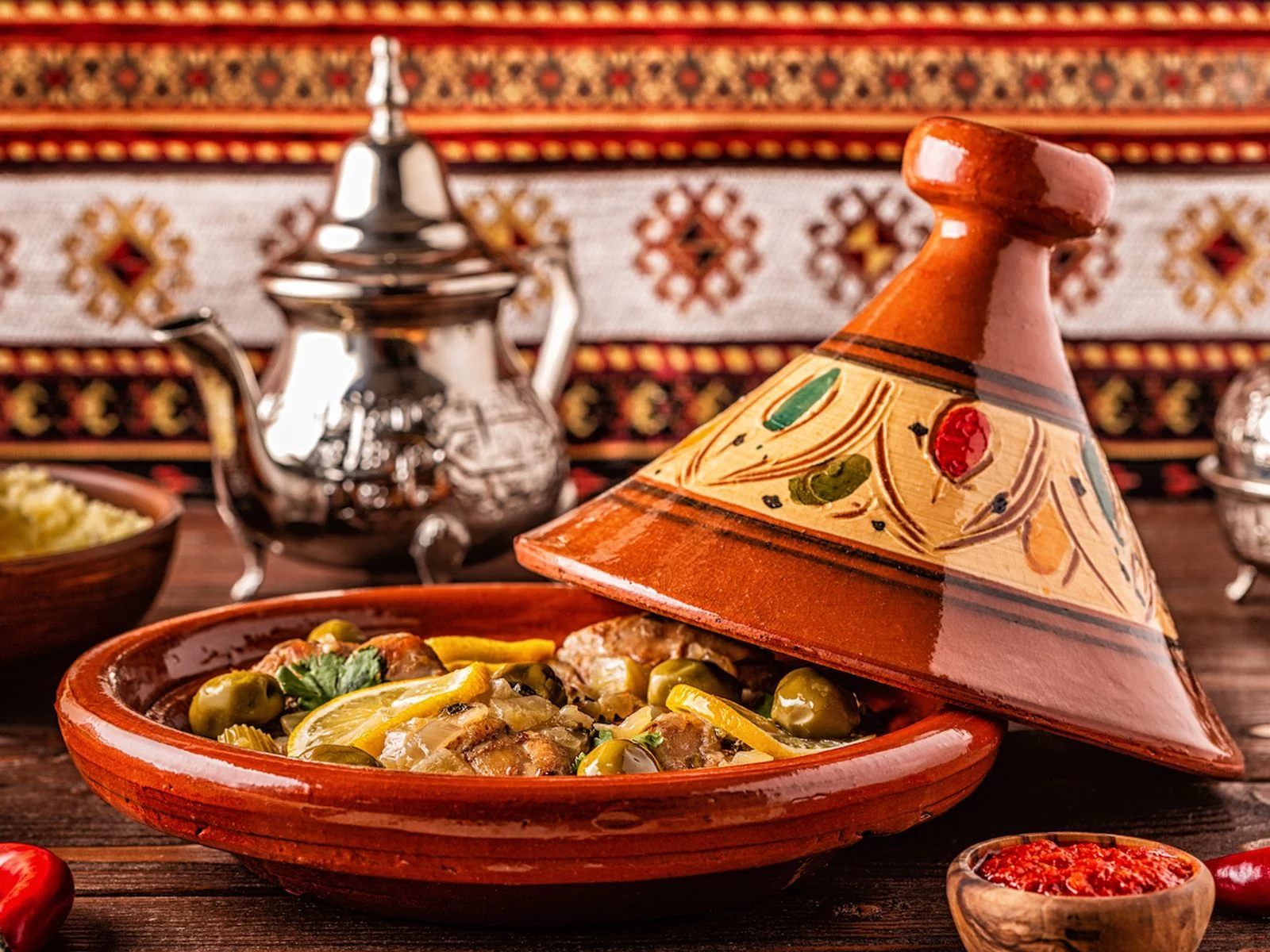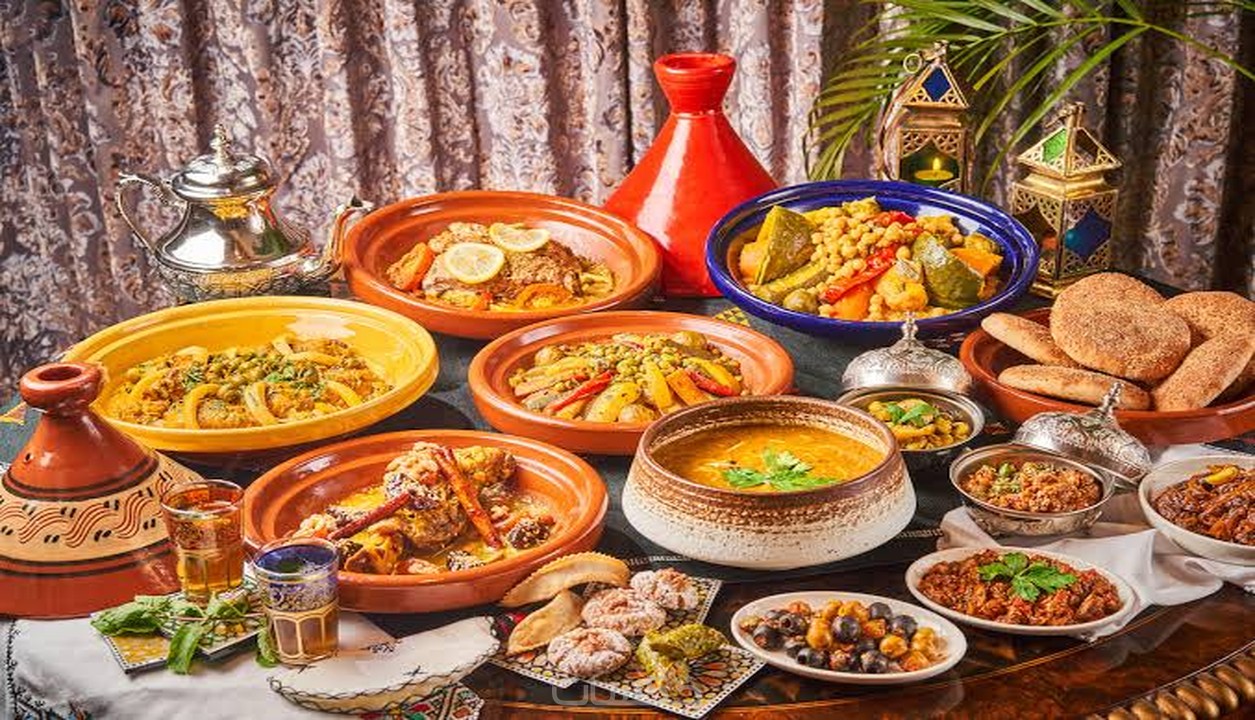What Is a Tagine? Meaning, Uses, and the Soul of Moroccan Cuisine

Tagine (also spelled tajine) is more than just a Moroccan dish — it’s a symbol of the country’s warmth, flavors, and slow-cooked culture. But what is a tagine exactly? What’s its meaning? And how is it used in Moroccan life?
In short, the word tagine refers to both the iconic cone-shaped clay pot and the rich, aromatic stew that’s cooked inside it. It's a dish deeply rooted in Moroccan traditions, served in homes and restaurants alike, and always meant to be shared.
Tagine Meaning: More Than Just a Meal
The tagine meaning goes beyond the pot or the recipe. It represents hospitality, family gatherings, and a love for slow, mindful cooking. Across Morocco, tagine is cooked for guests, holidays, and everyday meals — often in a single shared dish that brings people together.
What Is a Tagine Made Of?
A traditional Moroccan tagine combines meat (or vegetables), spices, and slow-cooked magic. Thanks to the clay pot’s design, moisture circulates during cooking, creating incredibly tender and flavorful results. Popular tagine varieties include:
- Chicken with preserved lemon and green olives
- Lamb with prunes, almonds, and cinnamon
- Fish tagine with chermoula and tomatoes
- Vegetarian tagines with pumpkin, chickpeas, or lentils
Tagine Uses: From Kitchen to Culture
So, what are tagine uses? Traditionally, tagines are cooked slowly over a charcoal brazier or wood fire. Today, many Moroccans also use stovetops or ovens. It’s not just for cooking — the tagine dish is also a serving vessel, brought directly to the table and eaten communally using warm khobz (Moroccan bread).
Signature Ingredients and Flavors
- Spices: cumin, turmeric, ginger, cinnamon, paprika
- Flavors: preserved lemon, saffron, olives, dried fruits
- Oils: olive oil or argan oil for richness
- Fresh herbs: parsley and coriander
What to Expect When Eating Tagine in Morocco
Eating tagine is a sensory experience. The scent fills the home as it cooks, and the first bite melts in your mouth. Most tagine meals are served with:
- Fresh Moroccan bread (khobz)
- Mint tea served in traditional glasses
- Seasonal salads or roasted vegetables
Why You Should Try Tagine
- Nutritious, slow-cooked, and made with natural ingredients
- Can be adapted for meat-lovers, vegetarians, or vegans
- Every region in Morocco has its own signature tagine recipe
To taste a tagine is to experience Morocco — warm, soulful, and full of flavor. Whether you're visiting or cooking at home, tagine is a journey worth taking.
Looking for where to eat in Rabat? Check out our Guide to the best traditional restaurants in Rabat.
